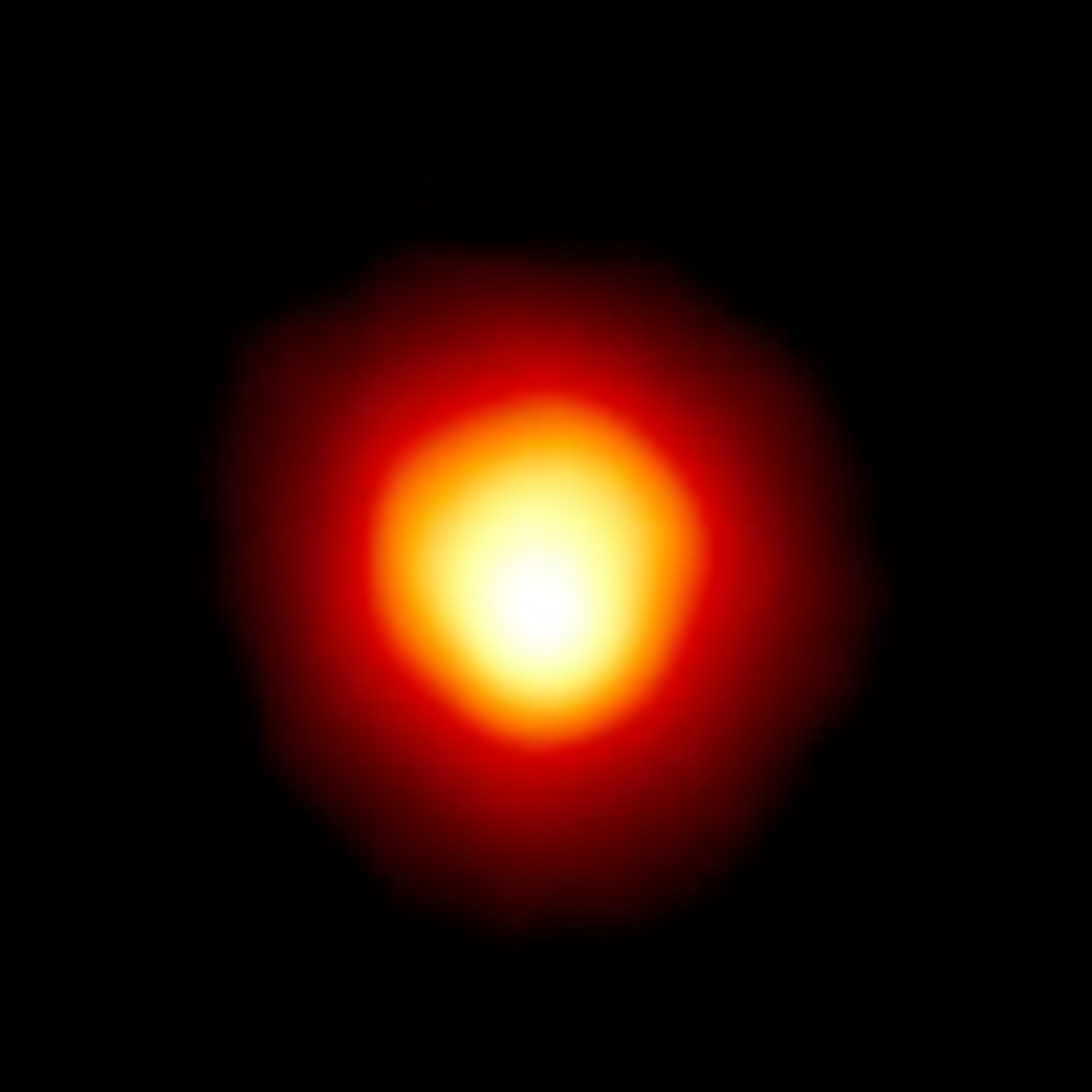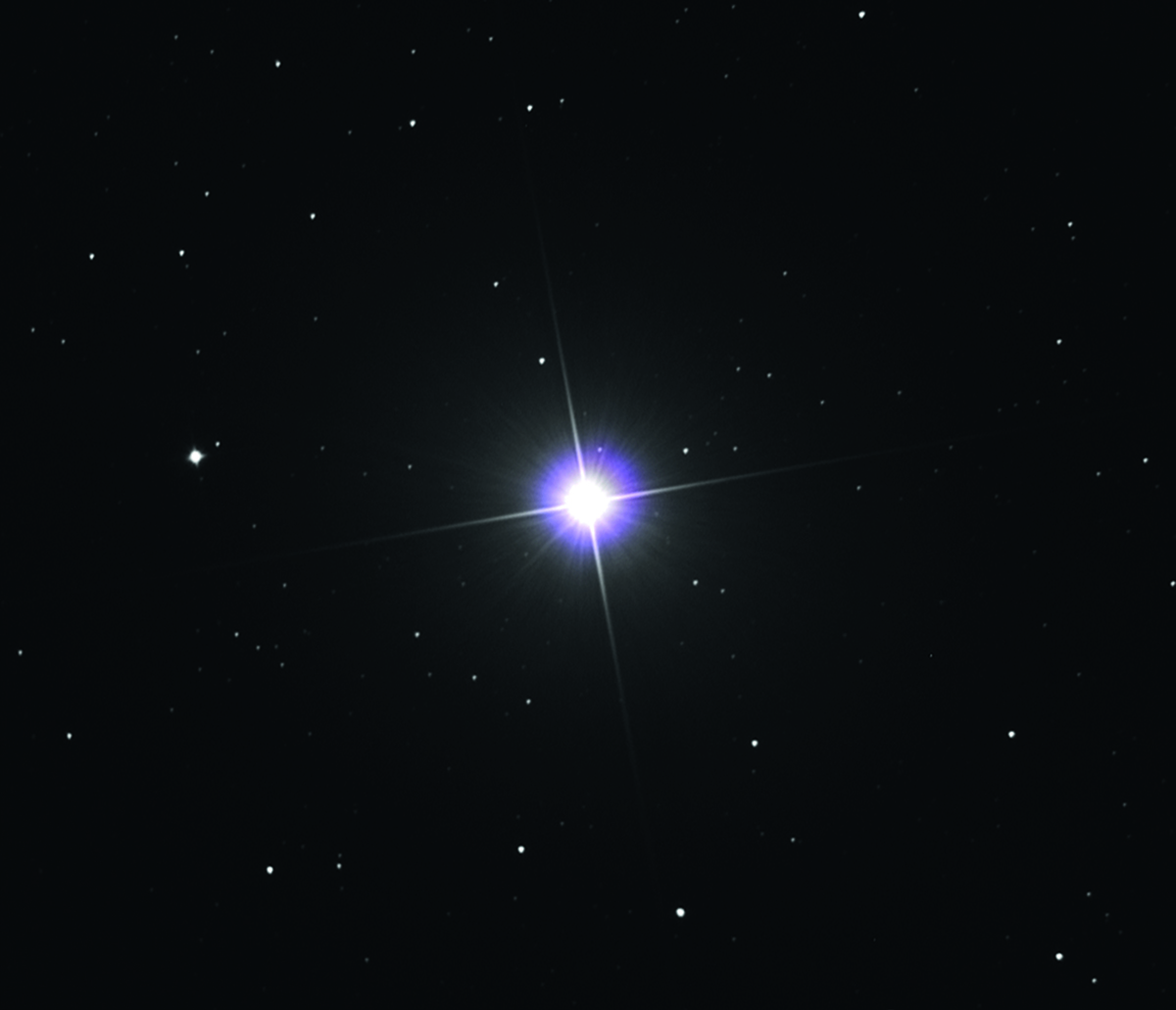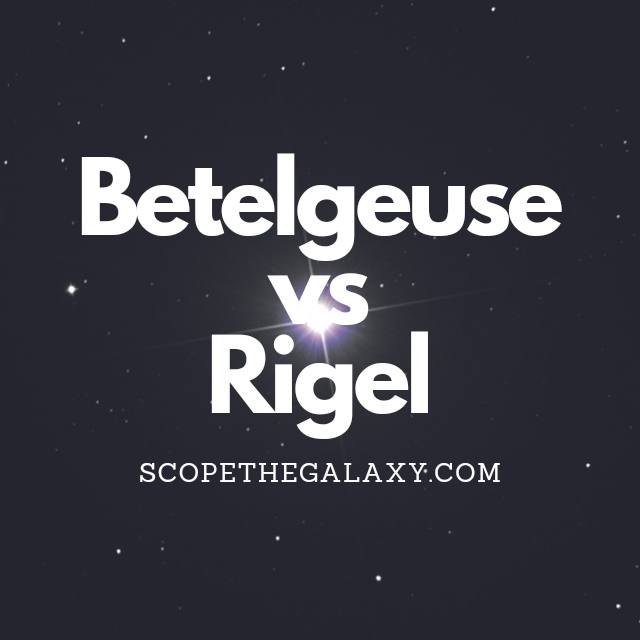*This post may contain affiliate links. This means we may make a commission if you purchase an item using one of our links*
Betelgeuse and Rigel are two of the brightest stars in the night sky and the most luminous celestial bodies in the constellation Orion. Still, there are key differences; Betelgeuse is a red supergiant, and Rigel is a blue-white supergiant. Betelgeuse is bigger, but Rigel is more massive.
Continue reading to explore the similarities and differences between these two colossal stars. Learn how to tell them apart in the night sky and what will happen when they reach the end of their lives.
What Is Betelgeuse?
Table of Contents

Betelgeuse, or Alpha Orionis, is the second brightest star in the Orion constellation and among the most luminous objects in the night sky. This luminosity and its deep red hue make it one of the easiest stars to spot and identify.
The star is a red supergiant, meaning it has exhausted the hydrogen fuel supply within the core and resorted to conducting nuclear fusion in the outer shells, which expand and create the largest known stars in the Universe.
Sitting 548 light years from our Sun, Betelgeuse possesses a radius that is 764 times that of the Sun and 16.5 times its mass. It also has a luminosity 126,000 times that of our Sun, though it is far cooler than the star burning at the center of the Milky Way galaxy.
The surface temperature of Betelgeuse averages 3,300 degrees Celsius (compared to 5,500 for our Sun). It is also far younger than our central star, with an estimated age of just eight million years.
Its variable nature means that the observed light can vary in intensity occasionally. For example, Betelgeuse’s “great dimming” during 2009/2010 saw its apparent magnitude increase from 0.6 to 1.6 before returning to its original brightness. This fluctuation was caused by a giant gas ejection which condensed to dust as it cooled.
The name Betelgeuse derives from an Arabic term meaning “the arm of the giant,” which refers to its position within the Orion constellation. Still, the star goes by many names; for example, in Sanskrit, it was known as “Bahu,” meaning the running stag or antelope.
Thanks to the colossal size of Betelgeuse, it is a volatile star that will collapse one day in the next million years and probably convert into a black hole. When this happens, we can view the explosion from Earth. However, it is too far away from our galaxy to negatively impact our solar system.
What Is Rigel?

Rigel, or Beta Orionis, is a blue-white supergiant star, the brightest celestial body in the Orion constellation. Though it is located around 870 light years from Earth, Rigel is one of the most visible stars in our night sky.
Although Rigel is classed as the beta star, it is actually the brightest within the Orion constellation. One explanation for this classification is that both Betelgeuse and Rigel are variable stars, so there are times when Betelgeuse outshines Rigel – this may have been the case when the stars were classified.
Its name is derived from the Arabic meaning “foot of the Central One.” This massive star may appear as a lone celestial body but is part of a system of four stars.
Estimates place Rigel at 79 times the size of the Sun, with 120,000 times its luminosity. The apparent magnitude of Rigel is 0.12, and its surface temperatures average around 11,800 degrees Celsius (far hotter than Betelgeuse or our Sun).
Blue supergiants come from stars that are born massive (10 to 100 times the mass of our Sun). These stars require large amounts of fuel to maintain the fusion processes within their core. But when they run out of hydrogen, they can continue burning heavier elements, such as helium, which causes the star to burn hotter and brighter.
Still, this brilliant luminosity comes at a cost; it makes the star unstable as it edges near the Eddington Limit. If a star exceeds this limit, it can eject its outer layers. Rigel will most likely end its life in a supernova explosion that will appear 300 times the brightness of Venus in our night sky.
Similarities Between Betelgeuse And Rigel
- Both Betelgeuse and Rigel belong to the constellation Orion.
- Both are supergiant stars that have exhausted most of the hydrogen within their cores and are nearing the end of their lifespan.
- When they reach the end of their lives, Betelgeuse and Rigel could collapse into black holes (or neutron stars).
- Both stars are clearly visible in the night sky. (And we will be able to witness their end-of-life explosions from here on Earth).
- Betelgeuse and Rigel are both far more luminous than our Sun.
Differences Between Betelgeuse And Rigel
- Betelgeuse is a red supergiant while Rigel is a blue white supergiant. This means that not only do they appear as different colors in the night sky, but they also possess some different key properties. For example, Rigel will continue to burn heavier elements at its core, increasing the temperature far beyond that of Betelgeuse.
- Rigel has a higher average luminosity than Betelgeuse.
- Betelgeuse has a far larger diameter than Rigel (up to 920 times our Sun’s diameter, compared to 79 times for Rigel).
- Betelgeuse is significantly bigger than Rigel but less
massive. Rigel possesses a mass of roughly 21 times that of our Sun; Betelgeuse is only 16.5 times the mass. - Betelgeuse is much closer to us (548 light years away) than Rigel (863 light years away).
Summary
Betelgeuse is the alpha star of the Orion constellation and occasionally its brightest. However, Rigel truly holds the title of the most luminous star within Orion. This blue-white supergiant may be smaller than Betelgeuse, but the fusing of heavy elements at its cores helps this star shine brightly in the night sky.
References
Betelgeuse | Size, Dimming, Color, Meaning, & Facts | Britannica
Betelgeuse Star For Kids | Facts, Summary, Structure, Size & Formation (nineplanets.org)
Orion | Location & Facts | Britannica
Rigel Facts For Kids | Summary, Structure, Function & Formation (nineplanets.org)
Rigel Star: Facts About the Brightest Star of Orion the Hunter – The Planets
Betelgeuse and Rigel: a tale of the two brightest stars in Orion | Space


